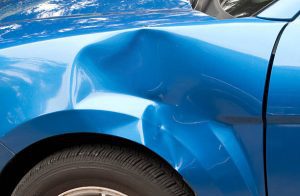Essential Car Safety Checks


Essential Car Safety Checks


Introduction
Ensuring the safety of your car is of utmost importance for both your well-being and that of others on the road. Regular car safety checks can help identify potential issues before they turn into major problems, saving you time, money, and potentially preventing accidents. In this article, we will outline a series of essential car safety checks that every vehicle owner should perform on a regular basis. By following these steps, you can ensure that your car remains in optimal condition and provide a safe driving experience for yourself and your passengers.
Tire Safety Checks
The condition of your car’s tires is crucial for road safety. Here are some tire safety checks you should conduct:
Check Tire Pressure
- Refer to your vehicle’s user manual to find the recommended tire pressure for your car.
- Using a tire pressure gauge, measure the air pressure in each tire, including the spare tire.
- If the tire pressure is too low, use an air compressor to fill it to the recommended level. If it’s too high, release air until the pressure is correct.
Inspect Tread Depth
- Tread depth is essential for maintaining traction on the road, especially in wet or slippery conditions.
- Use a tread depth gauge to measure the depth of the tire’s grooves.
- If the tread depth is below the recommended level (typically 2/32 of an inch), consider replacing the tires to ensure proper grip.
Check for Tire Damage
- Examine each tire for any signs of damage, such as cuts, bulges, or punctures.
- If you notice any significant damage, consult a professional to determine if the tire needs to be repaired or replaced.
Brakes and Lights Checks
Properly functioning brakes and lights are vital for your safety on the road. Here’s what you should check:
Brake System
- Test your brakes by gently applying them while driving at a low speed in a safe area.
- Listen for any unusual noises or vibrations and ensure that the car stops smoothly.
- If you notice any issues, have your brake system inspected by a qualified mechanic.
Headlights and Taillights
- Regularly inspect all headlights, taillights, and indicators to ensure they are functioning correctly.
- Replace any burnt-out bulbs promptly.
- Clean the lenses to maximize their brightness and visibility.
Brake Lights
- With the help of another person, check if the brake lights are functioning by pressing the brake pedal while the car is parked.
- If the brake lights don’t illuminate, replace the bulbs or consult a professional if the issue persists.
Fluid Levels Checks
Maintaining the proper fluid levels in your car is essential for its overall performance and safety. Here’s what you need to check:
Engine Oil
- Locate the dipstick, remove it, and wipe it clean.
- Reinsert the dipstick fully and remove it again to check the oil level.
- The oil should be between the minimum and maximum marks. If it’s low, add the recommended oil type.
Coolant
- Check the coolant level in the transparent reservoir under the hood.
- Ensure the coolant level is within the recommended range.
- If the coolant level is low, add a mixture of coolant and water as specified in the vehicle’s manual.
Brake Fluid
- Locate the brake fluid reservoir under the hood.
- Check the fluid level and ensure it is between the minimum and maximum marks.
- If the level is low, add the appropriate brake fluid recommended by the manufacturer.
Washer Fluid
- Ensure that the washer fluid reservoir is filled with an appropriate washer fluid mixture.
- Top it up if necessary, and replace the fluid regularly to ensure a clean windshield.
Steering and Suspension Checks
A well-maintained steering and suspension system is essential for vehicle control and stability. Consider the following checks:
Power Steering Fluid
- Locate the power steering fluid reservoir and check the fluid level.
- Ensure it is within the recommended range. If it’s low, add the appropriate fluid as specified by the manufacturer.
Steering Response
- While driving, pay attention to any abnormal vibrations or difficulty in steering.
- If you notice any issues, have a professional inspect the steering system.
Suspension
- Inspect the suspension components for signs of damage, such as worn bushings, leaks, or broken parts.
- If you notice any problems, have a qualified mechanic examine the suspension system.
General Safety Checks
In addition to the specific checks mentioned above, consider the following general safety checks:
Seatbelts
- Inspect all seatbelts for fraying, damage, or signs of wear.
- Ensure that the seatbelt latches and retractors are functioning correctly.
Windshield Wipers
- Check the condition of the windshield wiper blades for any signs of cracking or damage.
- Replace them if necessary, as worn wiper blades can impair visibility.
Emergency Kit
- Keep an emergency kit in your car with items such as a first aid kit, flashlight, jumper cables, and reflective warning triangles.
- Regularly check the contents of the kit and replace any expired items.
Conclusion
Regular car safety checks are vital for maintaining a safe driving experience. By following the steps outlined in this article, you can identify and address potential issues before they become major concerns. Remember, the safety of yourself, your passengers, and others on the road depends on the condition of your car. Stay proactive and prioritize safety by conducting these essential car safety checks regularly.








